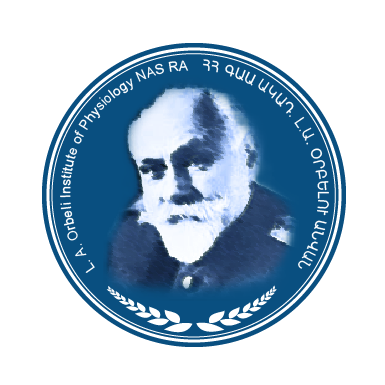- Home
- About us
- Departments
- Central Nervous System Physiology
- Central Nervous System functions compensation Physiology
- Immunology and Tissue Engineering
- Smooth Muscle Physiology
- Toxinology and Molecular Systematics
- Sensorimotor Integration
- Laboratory of Histochemistry and Morphology
- Human Psychophysiology
- Integrative Biology
- Purification, Certification and Standardization of Physiologically active substances
- Neuroendocrine Relationships
- Distance Լearning Center
- Laboratory of Hyperspectral Imaging of Surgical Targets
- Biophysics Lab
- News & Events
- Master's Program
- Research
- Councils
- Contact Us
- OIPH Docs
L. A. Orbeli Institute of
Physiology NAS RA
Laboratory of purification, certification and standardization of physiologically active substances

Armen Voskanyan
Head of Laboratory, PhD
E-mail: arminvosking@gmail.com
Main fields of activity
Determination of the toxicity of venoms of different snakes and arthropods and combined drugs, based on venoms and essential oils, by I/V, I/P, I/M and S/C injection. Experimental animals: mice and rats. Methods: processing and calculation of toxicological data by the Behrens and Miller-Tainter methods.
Study of the activity of microglia in the brain of rats after exposure to various snake venoms: with intact venoms and inhibited enzymatic activity. Studying the effect of essential oils on microglial activity. Study of the microvasculature under the central influence of physiologically active substances. Methods: Ca2+ATPase method for staining the microvasculature and microglia of the rat brain. Inhibition of the enzymatic activity of phospholipase A2 (svPLA2) by bromophenacyl bromide, and metalloproteinases (svMPs) by EDTA-Na2. Microphotography recording using a UCMOS09000KPB (9MP) digital camera. Quantification of brain microglial cell surface, size, and staining intensity using ImageJ software.
Assessment of nociceptive behavior in mice under the influence of various venoms and study of the antinociceptive effect of natural and synthetic endocannabinoids, analgesics, sesquiterpenes, phenolic compounds, anti-inflammatory drugs and cobra venoms. Methods: formaldehyde test (Hind paw Biting/Licking), Hot Plate test, Acetic Acid Writhing test to assess nociceptive behavior in mice. Injection of algesics - formalin, snake and arthropod venoms into the hind paw of mice. Administration of analgesics, N-acylamides, AID, essential oils and cobra venoms - intraperitoneally.
Registration of locomotor activity, heart rate and respiratory rate in rats when using physiologically active substances. Methods: open field test, PhysioPak device.
, qualitative and quantitative determination of the composition and chemotype of essential oils of various essential plants, comparison with standards components. Methods: GC-MS study.
Development of anti-inflammatory combination drugs based on snake venoms and essential oils. Study of dermato-pharmacokinetics during cutaneous application of analgesic and anti-inflammatory ointment drugs. Methods: plethysmometry, UV and VIS spectrometry, histochemistry, RAMAN spectrometry.
Modeling of hemorrhagic stroke induced by intracerebral injection of Macrovipera lebetina obtusa venom and study of motor activity and behavior in rats with lesions in the basal ganglia. Methods: intracerebral injection of venom according to stereotaxic coordinates, according to the atlas of the rat brain by G. Paxinos and K. Watson. Behavioral tests - elevated plus maze, balance test, grip strength test, etc.
Venoms used: snakes - Macrovipera lebetina obtusa, Montivipera raddei raddei, Daboya russelli russelli, Trimeresurus steinegeri, Naja naja oxiana, Ophiophagus hannah, Naja nigricincta nigricincta, Naja naja pallida, arthropods - Mesobuthus eupeus, Apis melifera, toads - Bufo bufo, etc. Used essential oils and extracts (aqueous, hydroalcoholic, aqueous-methanol) of plants: - oregano, rosemary and a number of mushrooms.
| Publications |
|---|
|
Group members





